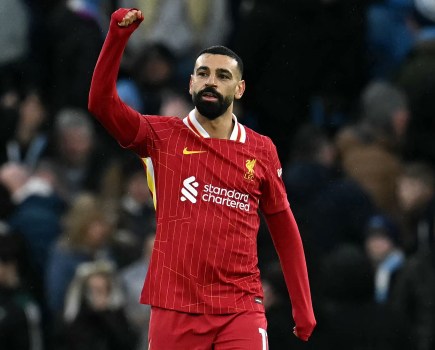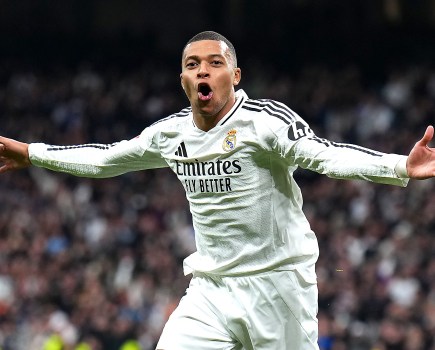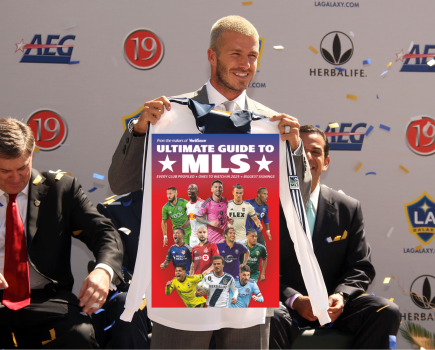 As coach of Barcelona, Pep Guardiola demonstrated a healthily idiosyncratic streak within the parameters of the club’s prevailing philosophy. And, as the new season begins in western Europe, the most pressing tactical question this term is what will he do at Bayern Munich? How will he react to a club that is not so steeped in those principles – and one that won almost everything there was to win last season, much of it in record-breaking style?
As coach of Barcelona, Pep Guardiola demonstrated a healthily idiosyncratic streak within the parameters of the club’s prevailing philosophy. And, as the new season begins in western Europe, the most pressing tactical question this term is what will he do at Bayern Munich? How will he react to a club that is not so steeped in those principles – and one that won almost everything there was to win last season, much of it in record-breaking style?
The basic theory of Jupp Heynckes’ side was much the same as that of Guardiola’s Barca, and that is one of the reasons why he should be such a good match. Bayern sought to dominate possession and pressed high up the pitch, but were more aggressive and physical than Barcelona. It’s tempting to see this as an inevitable part of the evolutionary cycle; a new way of playing that redefines the game and is played at an ever-increasing pace by increasingly bulky players. In this case, Barcelona benefitted from the stretching of the game brought about by the change in the offside law that effectively made an offside trap impossible to employ as a consistent tactic.
This allowed their phalanx of 5’7” geniuses to pass the ball among themselves at great pace and without fear of being buffeted by bigger opponents. Bayern and Borussia Dortmund employed similar principles, but did so using more muscular players.
It’s important, of course, not to read too much into pre-season games, but there can be no doubt that Guardiola took the German Super Cup seriously. He set Bayern up not in the 4-2-3-1 that was so successful last season, but in a 4-3-3. The distinction is not as sharp as is often made out. When Toni Kroos played as the central creator in Jupp Heynckes’ side he often dropped back. And if Bastian Schweinsteiger advanced with Luiz Gustavo holding, the result was a midfield triangle that could easily turn 4-2-3-1 into 4-3-3 and back again.
Alcantara controversy
Guardiola’s side against Dortmund in the Super Cup was surprisingly attacking. Gustavo, the most defensive of Bayern’s midfielders, was the odd man out as Thiago Alcantara arrived from Barcelona amid much controversy.
Given his agent is Guardiola’s elder brother, Pere, the risk was always there that Alcantara would come to be seen as, at best, a teacher’s pet and, at worst, a dangerous conflict of interests. In the Super Cup, he sat in front of Bayern’s back four in what might be considered
to be the “Sergio Busquets role”, with Kroos to one side of him and Thomas Muller on the other, in a surprisingly attacking midfield. The result was a collapse in the second half as Dortmund swarmed through time and again to win 4-2. The pendulum that had swung in favour of Bayern’s midfield last season seemed to have swooped back the other way, less because of the scoreline than the way the midfield contest was so comprehensively won by Dortmund.
The biggest worry was the vast space to the left side of the back of midfield that was constantly exploited by the surges of Pierre-Emerick Aubameyang. That sort of space simply wasn’t there last season when two of Gustavo, Javi Martinez and Schweinsteiger were in tandem. This was reminiscent of the most cavalier days of Louis Van Gaal – the man worryingly (in this context) described by Guardiola as the coach who has had the biggest influence on his career.
Martinez seems to be seen almost entirely as a central defender and so fulfils a key tenet of the Guardiola/Van Gaal/Marcelo Bielsa school of thought, which is that one of the centre-backs should be a passer to initiate attacks.
Frank Rijkaard played this role for Van Gaal’s Ajax, while at Barcelona Guardiola used Javier Mascherano, Gerard Pique and, at times, Busquets, as the distributor from deep. Martinez played the role himself at times in Bielsa’s first season at Athletic Bilbao, but while he has the ability to do this, his presence perhaps slightly weakens the defensive quality of a back four that last season thrived with Jerome Boateng and Dante in the centre.
No guarantee
Schweinsteiger’s position is also a cause for concern. He himself has already said that he doesn’t know what Guardiola has planned for him – and his role in pre-season was restricted by an ankle injury – but there seems no guarantee that he will be a regular. He may lack the rarified technique of Xavi or Andres Iniesta, but his dynamism and ability to play either as a holder or a more box-to-box player was central to Bayern’s success last season.
Other Guardiola selections – using Phillip Lahm as a central midfielder or Mario Mandzukic on the flank – have been baffling, but what has emerged is the likelihood that Croatian forward Mandzukic, whose energy was so important in springing Bayern’s pressing game last season, will play a secondary role this season. Mario Gotze missed most of pre-season with a groin injury so there was no chance to see how he would perform as a false nine, which is how Guardiola is expected to play him, but Muller, such an adept finder of space, has operated in such a way and it seems likely that is how Bayern will try to play next season.
It would be absurd, of course, to be too critical. No side, whoever their coach, can ever sustain the sort of success Bayern enjoyed last season indefinitely, and Guardiola is still getting to grips with his new side as the players become accustomed to him.
He showed himself at Barcelona to be intelligent and innovative, able to react to circumstance, so there is no reason why he should not find a way of playing that suits Bayern and the Bundesliga. But what we are seeing, already is that the transition may not necessarily be entirely smooth.
By Jonathan Wilson






